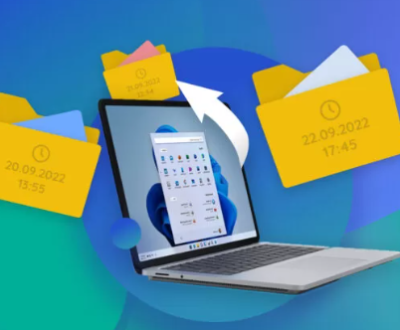Losing important files from an SD card can be a frustrating experience, whether it’s due to accidental deletion, formatting, or corruption. Fortunately, recovery is often possible with the right approach and tools. This comprehensive guide will walk you through the steps to recover deleted items from an SD card, including preparation, software options, and recovery techniques.
1. SD Cards
1.1 Types of SD Cards
Secure Digital (SD) cards come in various types: SD, SDHC (High Capacity), and SDXC (Extended Capacity). Each type has different storage capacities, and understanding these can help in selecting the right recovery approach.
1.2 How Data is Stored
Data on an SD card is stored in a series of blocks. When files are deleted, the data isn’t immediately removed; instead, the space is marked as available. This is why recovery is often possible if the space hasn’t been overwritten.

1.3 Common Causes of Data Loss
Accidental deletion
Formatting the SD card
Corruption due to improper removal
Physical damage
Virus attacks
2. Preparation for Recovery
2.1 Stop Using the SD Card
The most crucial step after data loss is to stop using the SD card immediately. Continuing to write new data can overwrite the deleted files, making recovery impossible.
2.2 Check for Backups
Before diving into recovery software, check if you have backups on other devices or cloud storage. If a backup exists, restoring from it can be a simpler solution.
3. Recovery Software Options
3.1 Free Recovery Software
Panda Assistant is an innovative data recovery software designed to help users effortlessly restore lost or deleted files from various storage devices, including external hard drives, USB drives, and SD cards. With its user-friendly interface and powerful recovery algorithms, Panda Assistant stands out in the competitive landscape of data recovery solutions. Whether you’re dealing with accidental deletions, formatting errors, or corrupt files, this software provides a reliable way to recover your precious data.
The software supports a wide range of file formats, ensuring that images, documents, videos, and more can be restored quickly and efficiently. Its advanced scanning capabilities allow users to perform deep scans for thorough recovery, while a preview feature lets you assess recoverable files before initiating the restoration process. Additionally, Panda Assistant offers customizable recovery options, giving users the flexibility to focus on specific files or entire drives.
3.2 Paid Recovery Software
If free tools don’t meet your needs, consider paid options:
EaseUS Data Recovery Wizard: Comprehensive features and excellent recovery rates.
Stellar Data Recovery: User-friendly interface and powerful scanning capabilities.
R-Studio: Advanced options for professional recovery.
3.3 How to Choose the Right Software
When choosing recovery software, consider the following:
User reviews and ratings
Compatibility with your operating system
Types of files supported for recovery
Ease of use and customer support
4. Step-by-Step Recovery Process
4.1 Install the Recovery Software
Download and install your chosen recovery software on your computer. Ensure that it’s from a reputable source to avoid malware.
4.2 Connect the SD Card
Insert the SD card into your computer using an SD card reader. Ensure that the card is recognized by the system.
4.3 Scan the SD Card
Open the recovery software and select the SD card from the list of available drives. Start a deep scan for better results, as it searches through all sectors.
4.4 Preview and Recover Files
Once the scan is complete, the software will display a list of recoverable files. Preview the files to confirm they are the ones you need, then select and recover them to a different storage device to avoid overwriting.
5. Manual Recovery Techniques
If software recovery doesn’t work, you can try manual techniques.
5.1 Using Command Prompt (Windows)
Open Command Prompt as an administrator.
Type chkdsk X: /f (replace X with your SD card drive letter).
Press Enter. This command checks for file system errors and attempts to fix them.
5.2 Using Terminal (Mac)
Open Terminal.
Type diskutil list to find your SD card.
Use sudo fsck_msdos /dev/diskX (replace X with your SD card number) to check and repair the file system.
6. Post-Recovery Tips
6.1 Create Regular Backups
To prevent future data loss, implement a regular backup schedule. Use cloud storage or an external hard drive to keep copies of important files.
6.2 Properly Eject the SD Card
Always eject the SD card safely using the operating system’s eject feature. This prevents corruption and data loss.
6.3 Monitor SD Card Health
Keep an eye on the health of your SD card. Tools like CrystalDiskInfo can help you check for issues and prolong the lifespan of your card.
About us and this blog
Panda Assistant is built on the latest data recovery algorithms, ensuring that no file is too damaged, too lost, or too corrupted to be recovered.
Request a free quote
We believe that data recovery shouldn’t be a daunting task. That’s why we’ve designed Panda Assistant to be as easy to use as it is powerful. With a few clicks, you can initiate a scan, preview recoverable files, and restore your data all within a matter of minutes.
Subscribe to our newsletter!
More from our blog
See all postsRecent Posts
- How to restore deleted images 2025-06-30
- How to restore a deleted file on windows 2025-06-30
- is there any way to restore deleted photos 2025-06-30

 Try lt Free
Try lt Free Recovery success rate of up to
Recovery success rate of up to









